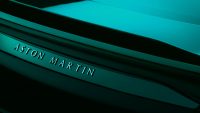 THE year was 1983 and it was set to be an iconic one for superminis. The iconic Peugeot 205 was launched that year, as was the iconic Fiat Punto.
THE year was 1983 and it was set to be an iconic one for superminis. The iconic Peugeot 205 was launched that year, as was the iconic Fiat Punto.
There was another launch that year as well, though whether you’d call it an icon is a bit more debatable. One thing’s for sure, though: the Vauxhall Nova is certainly a sales legend.
It originally came in a sensible three-door hatchback bodystyle, taking Vauxhall dealers straight into the modern era of the supermini arena. After the Chevette, it was a breath of fresh air.
Mind you, it wasn’t all fresh, for there was also a maddeningly dull two-door saloon. Can you imagine such a contraption today? Surprising thing was, though, many people back in the day did, meaning the two-door was a fairly decent seller. So much so, a four-door saloon came in 1984, along with a far more useful five-door hatch.
It was the model with the most doors that really got things going for the Nova though. Now, with the flash Cavalier and Astra ranges supplanted by the modern and inclusive Nova, they had a full and competitive line-up that really did enable them to take on Ford. Just a cursory glance at the contemporary SMMT sales charts confirms this: Vauxhall was now a firm top 10 brand.
If you’re a driver of the Car Dealer Magazine staff era, there’s another reason to love the Nova, though. Yes, the Nova SR – first as a 1.3, and later as a 1.4. This was one of THE ‘first cars’ to have, with street cred in droves and performance good enough to see off (what felt like) anything on the road. Those Vauxhall engines really were fast and totally unburstable, as many of our peers proved; chuck in tartan seats, well-stocked dial pack, sporty steering wheel and ‘that’ black rear boot spoiler and designation sticker, for the sort of appeal that kept car dealers going back to auctions time and again to source more.
Many got pranged, of course (if rear wheelarch rot didn’t see to them first), but even this wasn’t the issue it could be. Despite it being the first car to be seen in, the Nova SR was surprisingly affordable to insure. It took insurance companies a surprisingly long time to cotton on…
The GTE was an obvious trade-up, but for the heady insurance premiums the 100bhp 1.6-litre fuel-injection car carried. It was a further example of how Vauxhall was pressing on with technology; the Nova may have looked dull, but there was no questioning some of the mechanical engineering that went into it.
This is why the model even today carries a reputation in rallying circles; many a big-name star began their career in a Nova – it was the ultimate learner machine on the special stage as well as the highway.
It wasn’t all perfect for Vauxhall. It kept the Nova on sale too long. The rival Ford Fiesta was well established by the time it was replaced in 1989, which gradually hit sales – but despite this lesson, Vauxhall wouldn’t have an all-new supermini until 1993.
That was when the Corsa arrived; a lame facelift in 1991 may have introduced a posh new dash, but it wasn’t enough to fully lift the Nova.
This was a rare chink in the record of a car that crept under the headlines at launch, but quickly turned into a UK top-10 best-seller mainstay. By the time it was replaced by the Corsa, Vauxhall had sold nearly half a million in the UK alone, and you’ll still see the odd one or two on the road today.
They’re still not an icon, but perhaps deserve to be; today’s Corsa wouldn’t be the high-selling success it is without the Nova. We’ll always carry a candle for it here at Car Dealer, too: Bright blue Nova SR 1.3 with Kenwood stereo and sub in the boot? Bring it on…

































